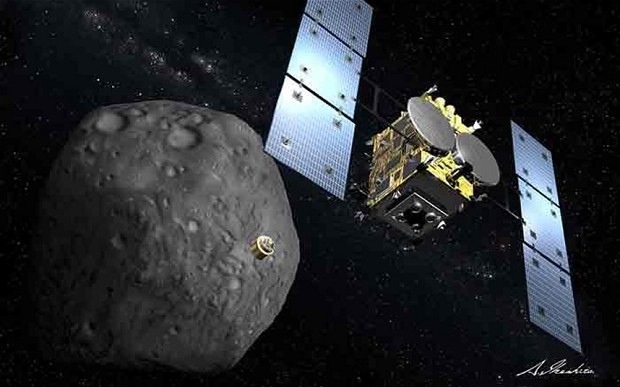
Japan’s space agency has successfully test-fired a “space cannon” designed to launch a projectile into an asteroid as part of the search for the origins of the universe.
The device will be aboard the Hayabusa-2 space probe that is scheduled to take off in 2014 and rendezvous with an asteroid identified as 1999JU3 that orbits between Earth and Mars in 2018.
Once in position close to the asteroid, the space cannon will detach itself and remotely fire a 4lb metal projectile into the surface of the miniature planet.
“An artificial crater that can be created by the device is expected to be a small one, a few meters in diameter, but … by acquiring samples from the surface that is exposed by the collision, we can get fresh samples that are less weathered by the space environment or heat,” the Japan Aerospace Exploration Agency said in a statement.
The mother craft will then land close to the crater and user a small rover to collect samples that would have otherwise been below the surface of the asteroid and return to Earth in late 2020. In all, JAXA scientists say the craft will shadow the 2,950-foot-diameter asteroid for around 18 months.
The project has “the potential to revolutionise our understanding of pristine materials essential to understanding the conditions for planet formation and the emergence of life,” JAXA said.
“It can provide important information needed to develop strategies to protect the Earth from potential hazards,” the agency added. “Moreover, robotic sampling missions to primitive bodies will be pathfinders for … human missions that might use asteroid resources to facilitate human exploration and the development of space.”
Hayabusa-2 is the second project to recover particles from deep space and will build on the success of Hayabusa, which in 2010 gathered surface dust from an asteroid and returned to Earth.
source: Telegraph Science
Originally posted 2013-10-28 20:42:08. Republished by Blog Post Promoter

![20131028-213949[1]](https://coolinterestingnews.com/wp-content/uploads/2013/10/20131028-2139491.jpg)












